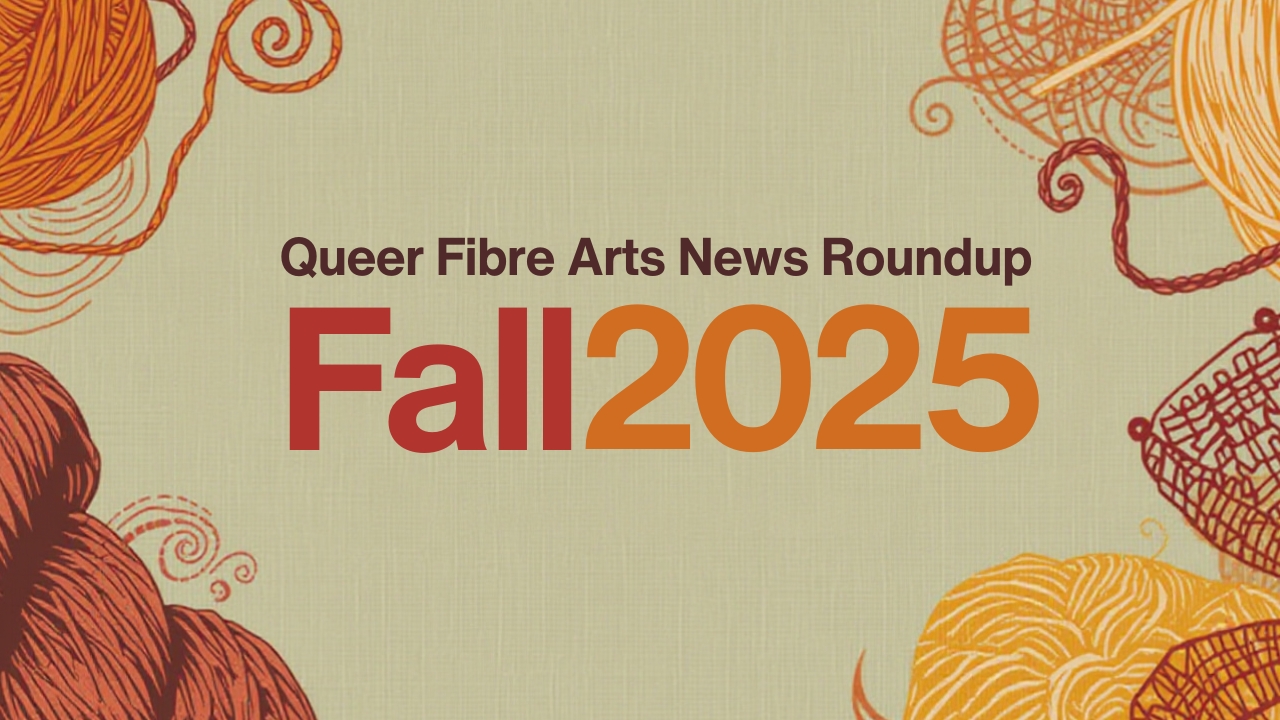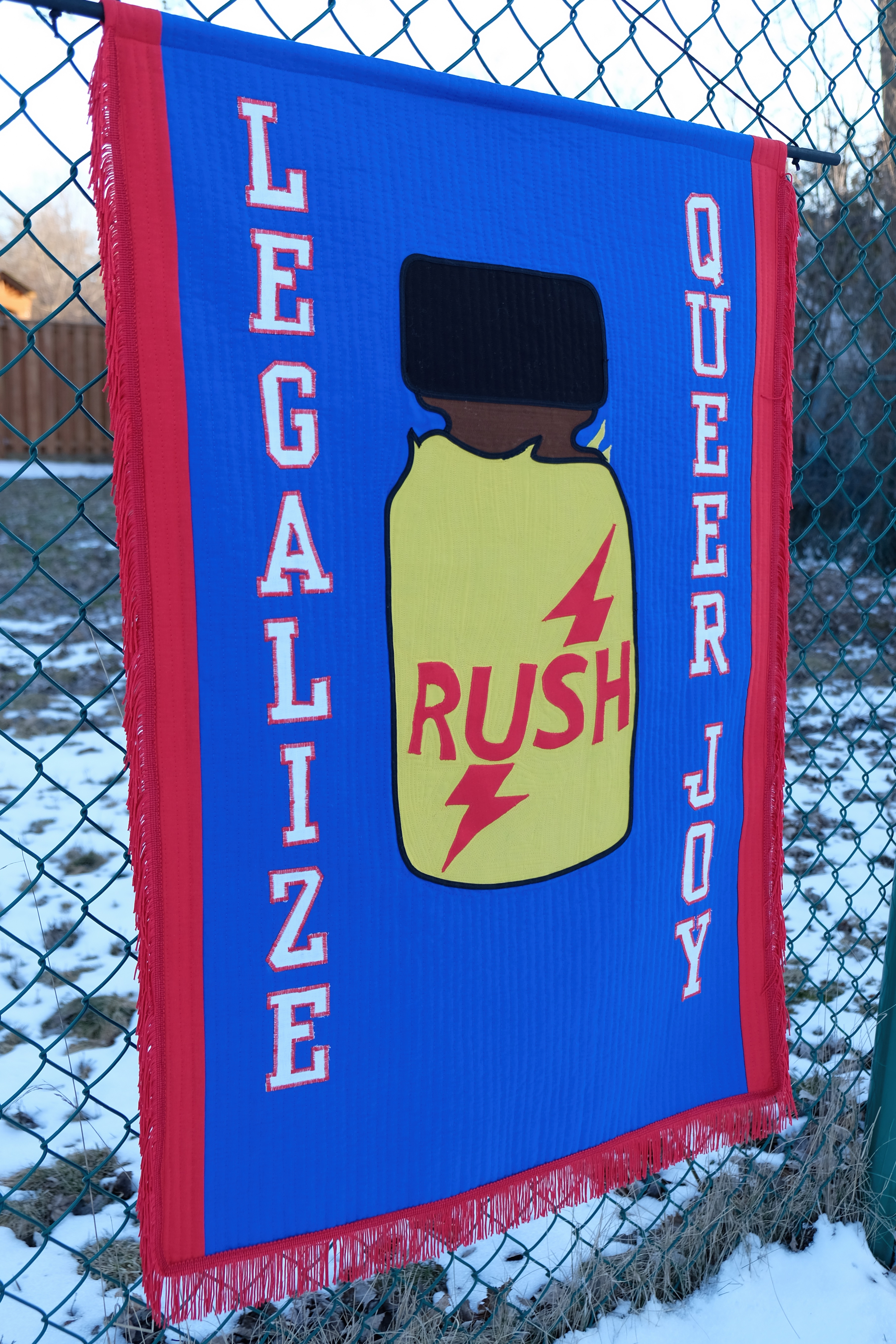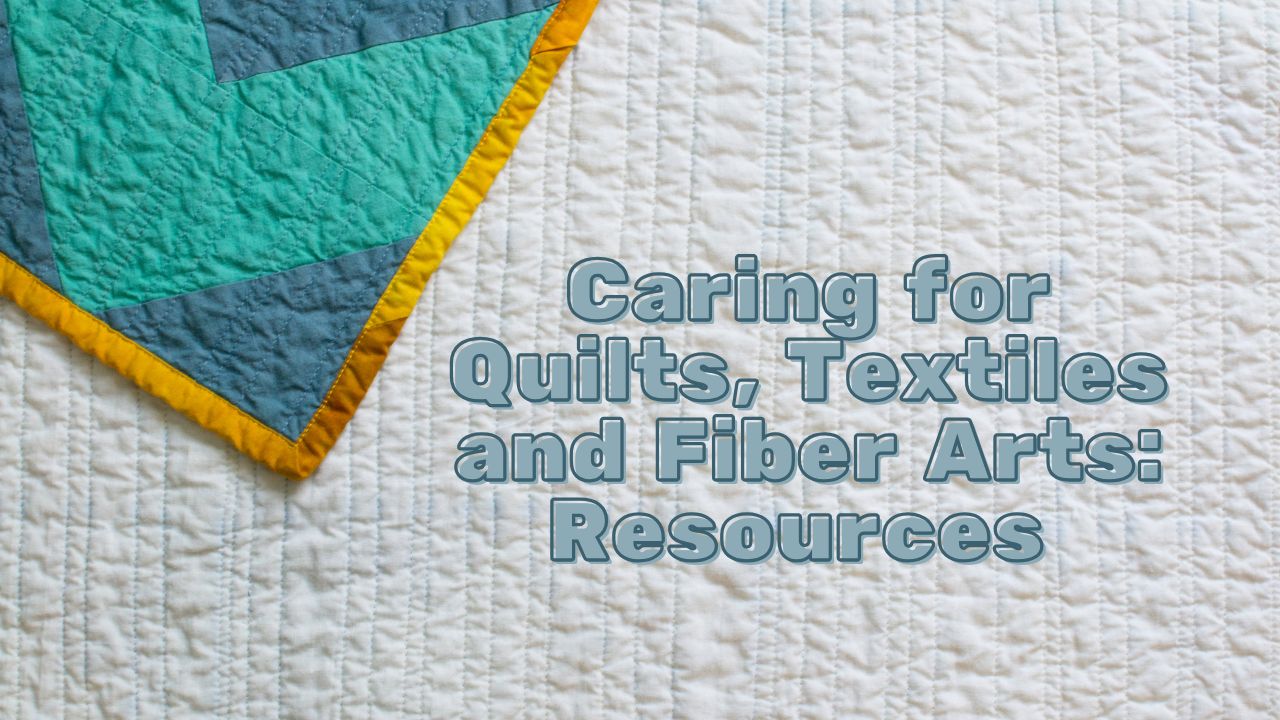Fall 2025: Queer Fibre Arts News Roundup

A curated collection of exhibitions, activism, and community quilting from September through early November 2025
The fall of 2025 has been an extraordinary season for queer fiber arts, with major museum exhibitions, widespread AIDS Memorial Quilt displays, and grassroots craftivism projects weaving together stories of resistance, remembrance, and joy. From activist quilts on Capitol Hill to groundbreaking shows in the Netherlands, here's your comprehensive roundup of queer textile news from the past three months.
Major Exhibitions: Global Reach for Queer Textile Art
LJ Roberts' debut solo exhibition "The Queer Mechanix" opened at Hales Gallery in New York (September 4 - October 18), featuring a remarkable large-scale quilted map documenting queer and trans auto mechanic shops across the United States and Canada from 1969 to 2023. Roberts transforms the traditionally masculine space of auto repair into a site of queer community building, combining hand-stitched embroideries with printmaking and sound to explore kinship structures and resistance.
Across the Atlantic, the TextielMuseum in Tilburg launched "Haus of fibre" on National Coming Out Day (October 10, running through March 14, 2026). This ambitious co-creation project with four queer artists – Nixie Van Laere, Célio Braga, Chathuri Nissansala, and Yamuna Forzani – presents textiles as powerful tools for queer identity and activism. The exhibition includes Walter Van Beirendonck's 'Silent Secrets' rug exploring gay identity and Ada Maricia Patterson's installation addressing the intersection of trans/queer experience with climate change.

'Family portrait' by Nixie Van Laere. Photo: Josefina Eikenaar
Jeffrey Gibson's "the space in which to place me" closed its run at The Broad in Los Angeles (ending September 28), marking the Indigenous queer artist's first solo museum show in Southern California. Adapted from his acclaimed U.S. Pavilion at the 2024 Venice Biennale, Gibson's textile banners and beadwork weave together personal identity, queer theory, and Native art traditions.

AIDS Memorial Quilt: A Living Memorial Across America
This fall saw an unprecedented wave of AIDS Memorial Quilt displays at universities and communities nationwide, emphasizing education for younger generations during LGBTQ+ History Month.
The University of Central Arkansas made headlines with their October display featuring the world premiere of a new panel created by "Project Runway" alum Korto Momolu. The opening reception on October 21 also featured Hot Springs Poet Laureate Kai Coggin, bringing together fashion, poetry, and remembrance.
Keene Pride in New Hampshire displayed nine panels (October 6-11) to coincide with National Coming Out Day. As Board President Adam Toepfer stated: "This quilt is more than fabric and thread — it is a living memorial."
Rockland Community College brought panels back for the first time since 2013, while the University of San Francisco's Thacher Gallery featured five blocks alongside archival materials from the GLBT Historical Society. The Daily Illini covered "Rainbow Reflections" at the Spurlock Museum, which wove together AIDS Memorial panels with LGBTQ+ textile artifacts through November 9.
Activist Threads: Quilts as Political Protest

A striking activist image came when HIV/AIDS advocates unveiled the #CutsKill Quilt on Capitol Hill on September 5. Created by community members and HIV service providers nationwide, this modern interpretation of AIDS activism demanded Congressional action against proposed $2 billion cuts to federal HIV programs. The action, featuring Hamilton performer Javier Muñoz, coincided with the U.S. Conference on HIV/AIDS.
Looking back to May but gaining renewed coverage this fall, the ACLU's "Freedom to Be" Trans Quilt continues to make waves. The 9,000 square-foot installation featuring 250+ panels celebrating transgender freedom represents one of the largest trans-affirming textile projects ever created.
In Indianapolis, artist Quinn Tailor's QLT GEN Project will unveil five intergenerational LGBTQ+ quilts on November 21 at Irvington Vinyl & Books. Supported by The Andy Warhol Foundation, the project dedicates quilts to different generations while exploring how queer identity shifts across time.
Community Stitching Circles: Grassroots Organizing
Beyond museums and monuments, queer fiber arts thrived at the community level this fall. GSAFE Wisconsin launched their 2025 Quilt & Fiber Art Auction (November 25 - December 2) with the powerful theme "When We Create, We Resist," supporting LGBTQ+ youth in schools.
Up North Pride in Michigan hosted regular fiber arts meetups throughout the fall, while Boston Fiber Company continued bi-monthly "Queer Fiber Crafts" gatherings. These community spaces transform traditional craft circles into sites of queer world-building and mutual support.
The Berkeley Public Library's "Transmissions Quilts" exhibition (which ran through June but influenced fall programming) demonstrated how libraries are becoming vital spaces for queer textile activism. The project, featuring work from 150+ trans and nonbinary artists, inspired similar community programs nationwide.
Academic Threads: Theorizing Craftivism
The fall also brought important academic discourse on queer craft. Adan Jerreat-Poole's article "Scraps, Scrappiness, Scrapper: Crafting/Coding as Disabled Feminist (World)Making" in Catalyst: Feminism, Theory, Technoscience (October 16) explores how disabled queer feminist creators use textile work to challenge ableist narratives and build community access.
The Journal of Design History published a review of Daniel Fountain's "Crafted with Pride, Queer Craft and Activism in Contemporary Britain," examining how "craftivism" transforms traditional understandings of craft from passive to powerfully political.
Looking Forward: The Threads Continue
With everything going on in the world right now the resurgence of queer fiber arts feels both timely and necessary.
These textiles are resistance, monuments to lost loved ones, and blueprints for queer futures.
From the AIDS Memorial Quilt's continued growth to new trans quilting projects, from major museum recognition to grassroots community circles, queer fiber artists are flourishing.
The concentration of activity during LGBTQ+ History Month and National Coming Out Day shows how institutions are increasingly recognizing fiber arts as legitimate and powerful forms of queer expression.
Yet the most exciting developments may be happening in community centers, libraries, and living rooms where quilting circles become spaces for intergenerational connection and collective healing.
As DIVA Magazine noted earlier this year, these quilts act as "archives of trans joy" – and indeed, all queer joy. In a time of increasing legislative attacks on LGBTQ+ communities, these textile projects offer both comfort and resistance, wrapping us in histories of survival while stitching pathways toward liberation.

What queer fiber arts stories are happening in your community? Share your local exhibitions, quilting circles, and textile activism projects in the comments below.

